General awareness of Low Impact Development (LID) is important as development continues. The audience for an education and awareness campaign would be for an audience that ranges from residents (homeowners) to area developers. LIDs range in use from residential homes to large business and industrial buildings. For example, local homeowners could use rain gardens for increased stormwater filtration and landscaping. Larger scale LIDs include bioswales, cisterns and pervious pavement. Below is a summary of each LID technique.
Information on LID can be communicated in brochures and intergrated into local workshops offered by organizations such as the Masters’ Gardeners classes.
| WHAT IS LOW IMPACT DEVELOPMENT? |
During the past ten years, significant changes have occurred in stormwater management. Much of this evolution in practice was propelled by interests in sustainable stormwater management in places such as Prince George County, Maryland, which pioneered the use of bioretention ponds for stormwater management in the mid-1980s.
| Low Impact Development (LID) is an innovative stormwater management approach with a basic principle that is modeled after nature: manage rainfall at the source using uniformly distributed decentralized micro-scale controls. LID's goal is to mimic a site's predevelopment hydrology by using design techniques that infiltrate, filter, store, evaporate, and detain runoff close to its source. Techniques are based on the premise that stormwater management should not be seen as stormwater disposal. Instead of conveying and managing / treating stormwater in large, costly end-of-pipe facilities located at the bottom of drainage areas, LID addresses stormwater through small, cost-effective landscape features located at the lot level... LID is a versatile approach that can be applied equally well to new development, urban retrofits, and redevelopment / revitalization projects. | |
(Source:
http://www.lid- stormwater.net/intro/ background.htm#1) |
Various LID techniques include bioretention ponds (rain gardens), rain barrels, cisterns, green roofs, bioswales, and pervious pavement. Below are a few pictures of these techniques.
| BIORETENTION PONDS |
A bio-retention basin is a form of low impact development stormwater management practice that reduces runoff, increases infiltration, and inevitably improves water quality.
| Bioretention ponds are often simply referred to as rain gardens. These rain gardens are a garden bed in a shallow basin that treats stormwater by capturing the first half inch to inch of rain and filtering it through various bed components before releasing in into the subsoil. Sometimes, rain gardens require an overflow outlet into an adequate channel. | 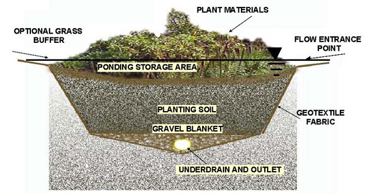 |
| CISTERNS AND RAIN BARRELS |
A rain barrel is a form of low-impact development used mostly in small scale applications. A rain barrel collects and stores rainwater from a rooftop. This water can then be used for non-consumptive purposes such as watering plants, watering lawns, or washing cars. Cisterns are large-scale rain barrels usually buried underground and used as a means of water collection, storing rainwater from rooftops. Again the water can be used for non-consumptive purposes.
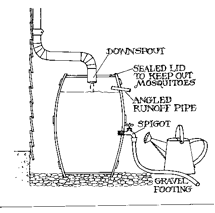
|
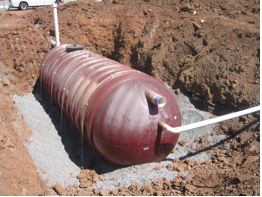 |
Rainbarrel |
Cistern |
| BIOSWALES |
|
Bioswales
use natural vegetation to allow for a long route of water conveyance
which encourages higher infiltration, removal of sediments and particles
and reduces stormwater runoff. |
 |
| PERVIOUS PAVEMENT |
This is a paving method that allows movement of water and air through material to increase runoff infiltration and filter sediments. There are various types of pervious pavement. Shown below is pervious concrete and a method using pavers.
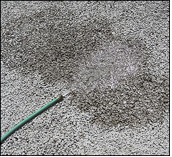 |
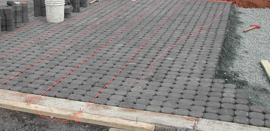 |
|
PERVIOUS
CONCRETE |
PERVIOUS
PAVERS |
| GREEN ROOFS |
Green roofs are employed for LID purposes. They function through recuding heating and cooling, reducing the runoff rate, filtering polluntants and CO2 out of the air and pollutants and heavy metals from rainwater, and finally increasing wildlife habitiat. Green roofs require native vegetation and extra roof support.